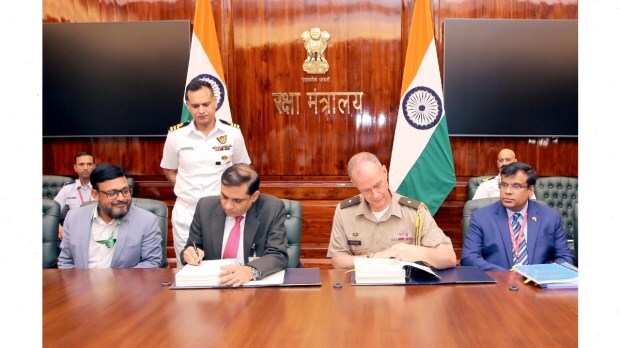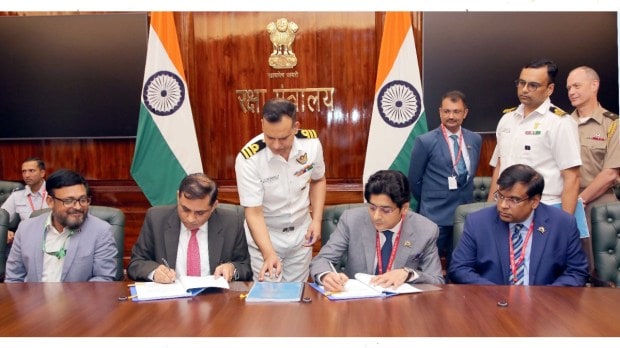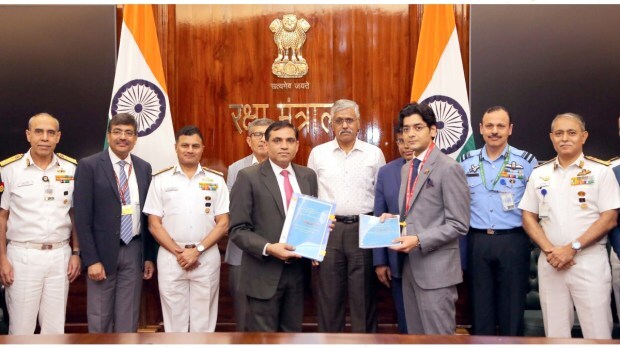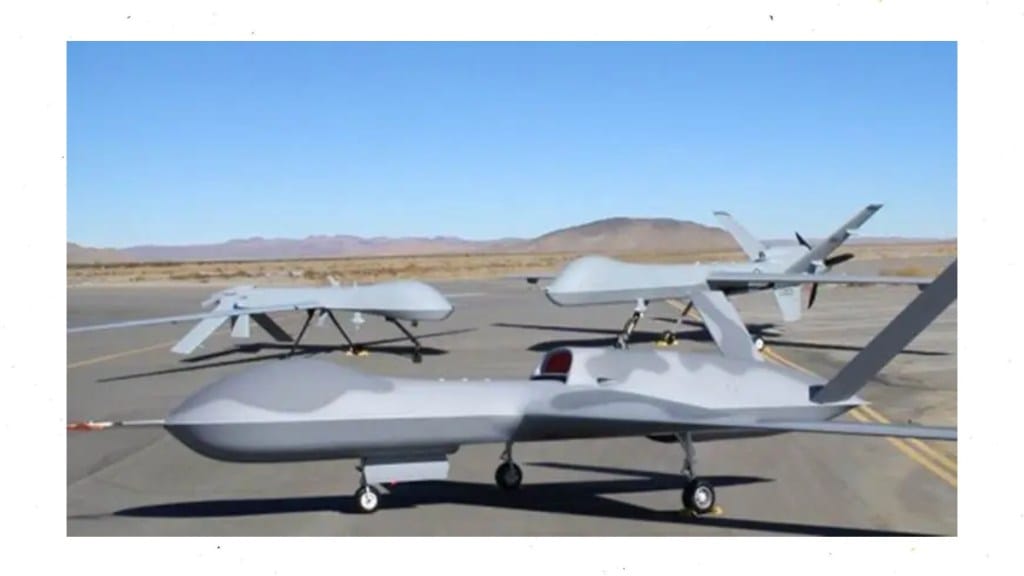India has sealed a $4 billion deal with US defence giant General Atomics to acquire 31 Predator drones. This significant purchase is under the Foreign Military Sales (FMS) framework and comes as a key step in bolstering India’s military strength. The acquisition, signed in New Delhi with top defence officials in attendance, underscores the growing strategic alignment between India and the US. The move is widely seen as critical in strengthening India’s military capabilities, particularly along its contested borders with China.
A Strategic Defence Partnership
The procurement of the MQ-9B Predator drones is a proof to the deepening defence cooperation between India and the United States. This deal, struck just weeks before the US presidential election, signals a new phase in bilateral military ties. India’s decision to procure these drones follows approval from the Cabinet Committee on Security (CCS), chaired by Prime Minister Narendra Modi recently. The procurement was approved as part of a broader strategy to enhance India’s surveillance capabilities along critical fronts, particularly where it faces challenges from China.

Image 1& 2: Contract signing between Ministry of Defence and US Government for Tri-Service procurement of 31 MQ-9B Sky/Sea Guardian High Altitude Long Endurance Remotely Piloted Aircraft System in the presence of Defence Secretary Shri Giridhar Aramane in New Delhi on October 15, 2024.

The MQ-9B drones, a variant of the MQ-9 Reaper, are well-known for their combat effectiveness and surveillance capabilities. They played a pivotal role in the US operation that eliminated al-Qaeda leader Ayman al-Zawahiri in July 2022. For India, these drones represent a significant upgrade in both offensive and defensive capabilities. Each military branch—Navy, Army, and Air Force—will benefit from specific configurations tailored to their operational needs.
What’s in the Package?
The deal includes 31 MQ-9B Sky Guardian drones, 161 Global Positioning & Inertial Navigation Systems (EGIs), 170 AGM-114R Hellfire missiles, and a range of advanced sensor and communication packages. The Navy will receive 15 Sea Guardian drones, configured for maritime surveillance and anti-submarine warfare. The Army and Air Force will each receive eight Sky Guardian drones, designed to enhance surveillance along the Line of Actual Control (LAC) with China.

Image 3 & 4: Contract signing between Ministry of Defence and General Atomics Global India Pvt Ltd for Performance Based Logistics for the Remotely Piloted Aircraft System through Depot Level Maintenance, Repair & Overhaul in India in the presence of Defence Secretary Shri Giridhar Aramane in New Delhi on October 15, 2024.

These drones, capable of flying at altitudes over 40,000 feet with an endurance of more than 35 hours, will allow the Indian military to conduct extended surveillance and reconnaissance missions. The Sea Guardians are particularly important for tracking and hunting submarines and surface ships, especially in the increasingly contested Indian Ocean, where China has been expanding its naval presence.
Vivek Lall: The Man Behind the Deal
Dr Vivek Lall, Chief Executive of General Atomics Global Corporation, played a pivotal role in securing this deal. A prominent figure in US-India defence relations, Lall has long been at the forefront of efforts to strengthen military ties between the two nations. He was instrumental in navigating the complex negotiations that ultimately led to this deal. His leadership has facilitated India’s access to advanced defence technologies, marking a new chapter in US-India defence cooperation.
Dr Lall’s contributions to the deal are part of a broader defence partnership that has developed over the years. In 2017, The Financial Express reported that a bipartisan push in the US Congress had advocated for the approval of the MQ-9 Predator deal, underscoring its importance to the US economy and its strategic relationship with India. The deal reflects not only military cooperation but also technological collaboration, as both nations have committed to co-producing defence technologies and advancing defence innovation.
Strengthening India’s Maritime and Aerial Defence
The Sea Guardian drones acquired by the Indian Navy are tailored to integrate with India’s existing surveillance platforms, such as the P-8i long-range maritime patrol aircraft and the MH-60R multi-role helicopters. These drones will enhance India’s ability to monitor and protect key maritime areas, particularly the Indian Ocean Region (IOR), where Chinese naval activity has been on the rise. The drones are designed to operate in a network-centric environment, providing commanders at sea with real-time data and greater flexibility in decision-making.
India’s acquisition of these drones also aligns with the US-India Defence Industrial Cooperation Roadmap, established in May 2023. This roadmap outlines a plan for the two nations to collaborate on defence technology and production, further enhancing their strategic partnership. The subsequent launch of the India-US Defence Acceleration Ecosystem (INDUS X) has created a platform for universities, think tanks, and corporations to work together on innovative defence solutions, strengthening the defence technology ecosystem.
A Long Journey to the Deal
The Predator drone deal has been in the works for several years. The Indian Navy first requested these drones in 2016, and the deal was closely followed by requests from the Army and Air Force. In June 2023, the Defence Ministry officially cleared the way for procurement under the government-to-government framework, a move that was long anticipated by defence analysts. Earlier reports from Financial Express Online in 2021 highlighted that the Indian Navy had leased the Predator during heightened tensions with China, further showcasing the drone’s critical role in military operations.
The long process to finalize the acquisition reflects the complexity and scale of the deal. A special Indian team travelled globally to select the airframe and sensor package, consulting with the US Air Force and the Royal Air Force before making its final decision. The result is a highly customized platform that meets India’s specific defence requirements.
The Future of India-US Defence Cooperation
India’s acquisition of 31 Predator drones is not just about enhancing military capabilities; it is also a strategic signal of the deepening defence cooperation between the two democracies. The procurement comes on the heels of several key agreements between the US and India, including the conclusion of the India-US Defence Industrial Cooperation Roadmap and the INDUS X initiative.
Earlier this year, the US Congress approved the sale of these drones, signalling bipartisan support for deepening defence ties with India. As Financial Express reported, the deal includes a comprehensive package of advanced UAV systems and weapons, positioning India as a leading operator of these cutting-edge drones in the region.
The US has steadily become one of India’s most important defence suppliers, with this latest acquisition further cementing its role in India’s modernization efforts. With China continuing to expand its influence in the Indo-Pacific, this procurement strengthens India’s ability to safeguard its borders and maintain stability in the region.
A New Era in Military Collaboration
India’s purchase of 31 Predator drones from the US is a landmark deal that not only enhances its military capabilities but also signals a new phase in defence collaboration with the United States. These long-endurance drones will play a crucial role in surveillance and reconnaissance missions, particularly in contested areas with China and the Indian Ocean. As India continues its military modernization, this acquisition is a significant step in strengthening its defence posture and deepening its strategic ties with the US.

